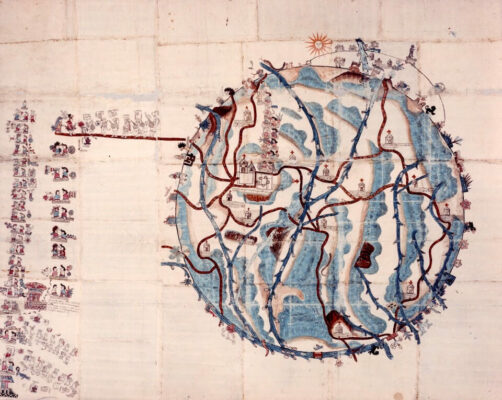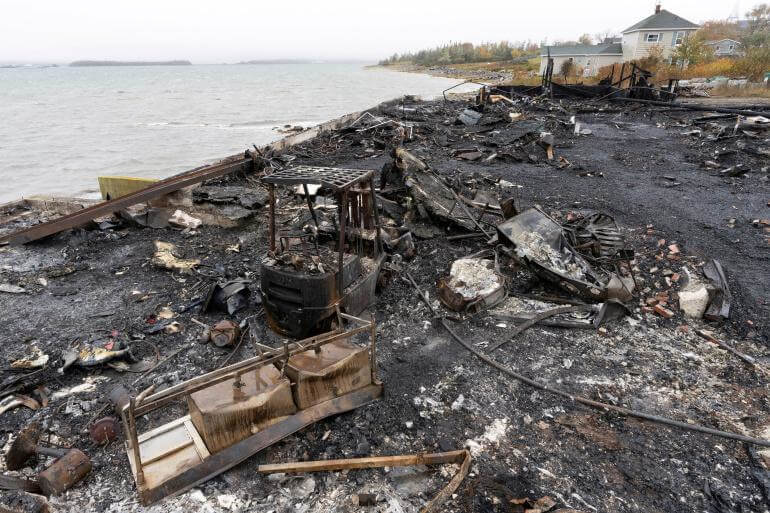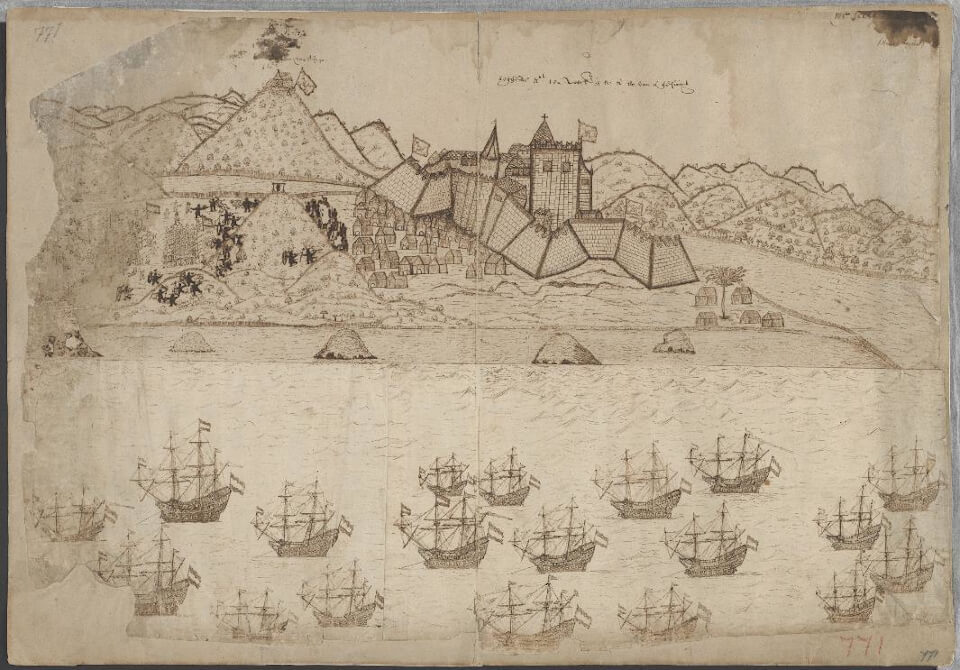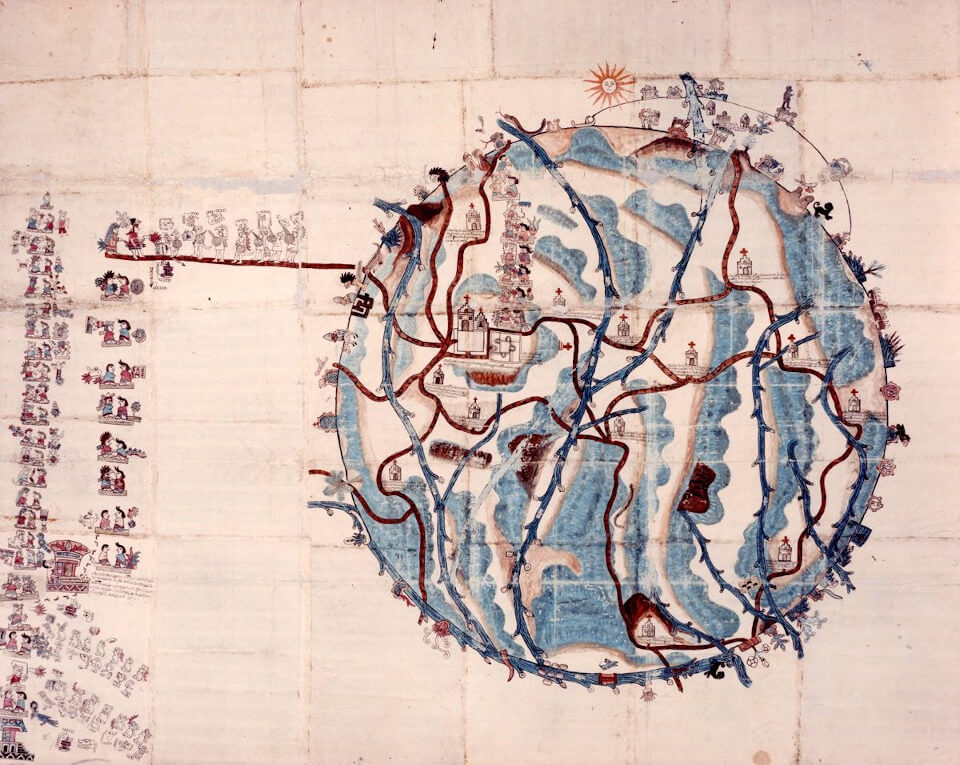A Brief History of Colonisation, Customary Law, and Indigenous Marine Dispossession

My work for One Ocean Hub is centred on examining the history of colonialism within coastal and sea spaces and the continuing impact of this on the ‘customary’ practices of coastal communities. In preparing to begin archival research and fieldwork surrounding Ghana’s artisanal fishing communities, I have been conducting a review of the intertwined histories of colonisation, law, and Indigenous marine dispossession. Without claiming to be comprehensive and stressing that that this process occurred very differently across diverse spaces and led to heterogenous regional issues and challenges, I will provide here a brief overview of some of the key learnings from this reading on the themes of: legal pluralism, coastal and maritime sovereignty, and the construction of ‘customary’ law and ‘traditional’ usage rights. These are issues that must be comprehended and analysed within their distinctive local contexts if we are to meaningfully engage with and support coastal communities whose livelihoods and customs continue to be obstructed by the structures of colonialism.
On an early Saturday morning in October, a lobster pound in southwest Nova Scotia burned to the ground after a suspected act of arson. Stored in the pound were lobsters caught by Mi’kmaq fishers from the Sipekne’katik First Nation following the launch of their self-regulated lobster fishery on 17 September 2020 during the federally mandated off-season. This had been met with weeks of threats, sabotage, and harassment towards Mi’kmaq fishers and authorities by non-Indigenous commercial fishers – who are not permitted to operate during the off-season – before the suspected arson forced a government response and propelled the conflict into the international media. It is important to note that while commercial fishers have argued that they are concerned about the impact of Mi’kmaq fishing on the health of lobster stocks during the off-season, these claims have been refuted by fisheries scientists due to the small-scale nature of the Sipekne’katik fishery. Central to this conflict are the treaty obligations of the federal government which secures Mi’kmaq rights to fish and to sell the products of their fisheries, including during the off-season.

[John Morris/Reuters]
In 1993, after being charged with fishing and selling eels without a licence during the closed season, Donald John Marshall Junior of the Membertou First Nation argued that the Treaties of 1760-1 between Mi’kmaq communities and the British crown secured Mi’kmaq rights to sell fish in exchange for “necessaries”. After being found guilty, Donald’s appeal was heard by the Supreme Court of Canada, which overturned the previous ruling and found that the Treaties of 1760-1 did in fact secure Mi’kmaq rights to obtain “necessaries” through hunting and fishing by trading the products of those activities. The Court also interpreted that the “necessaries” described in the treaty text should be considered in the modern context to affirm Mi’kmaq rights to utilise fishing to obtain a “moderate livelihood.”
Although a landmark ruling, and despite promises by successive governments to negotiate a framework for implementing the Marshall ruling, the meaning of a “moderate livelihood” remains undefined and this has continued to obstruct Mi’kmaq ability to practice their fishing rights. After waiting twenty-one years for government action, the Sipekne’katik First Nation have instead exercised their rights to self-government – as protected by Section 35 of Canada’s Constitution – and their rights to harvest and sell lobsters – as enshrined in the 1760-1 treaty and the Marshall ruling – to launch a self-regulated lobster fishery. As Sipekne’katik Chief Mike Sack stated, “The treaty’s between both of us [Mi’kmaq and federal government] … They haven’t been upholding it like they should, so if they’re not capable of doing that, we’ll get it defined ourselves.”
These recent events highlight the ongoing struggles of Indigenous Peoples and local communities to secure their rights to access, manage, and benefit from marine spaces and resources. Even in contexts where the legal rulings of state courts have recognised the rights and jurisdictions of these communities after decades (and centuries) of marine dispossession, this does not then lead directly to the peaceful and unobstructed practice of these rights. Crucially, these events highlight that colonisation did not only take place on land but also occurred at sea. Through the violent imposition of diverse rules, regulations, and agreements, colonial powers attempted to advance sovereignty over marine spaces and resources while undermining Indigenous sovereignty over the same spaces and resources. As the situation in Nova Scotia makes clear, this has led to fundamental challenges that need to be navigated time and time again in order to attain or protect Indigenous and ‘customary’ marine jurisdictions.
European Empires, Oceanic Jurisdiction, and Indigenous Marine Spaces
As competing European interests expanded overseas from the fourteenth century onwards, arguments and discourse surrounding oceanic jurisdiction intensified in Europe at the same time that relationships between Indigenous and European groups were being forged in coastal and marine areas. In Europe, natural law arguments surrounding the ‘high seas’ as the common property of all mankind (res communis) sat alongside imperfect and competing imperial claims over the rights to police bodies and vessels at sea (Benton, 2010). There were also assertions that a territorial-style sovereignty could be extended over ‘territorial seas’ and the resources within those seas, although the distances to which this sovereignty extended was not definitive or agreed (Bedermen, 2012). While there were intense contests between competing European interests surrounding the extent of imperial sovereignty and the rights of imperial powers to limit the navigation and maritime activities of rival subjects, these arguments were rooted in the dominant European legal conceptions of marine space (Steinberg, 2001).
In projecting these imperfect conceptions of maritime jurisdiction to Indigenous waters, Europeans conflicted with pre-existing coastal and marine jurisdictions. Indigenous conceptions of marine space were not homogenous. Instead, Europeans encountered diverse regulatory regimes surrounding resource management, coastal tenure, and ocean stewardship that also included propertied claims to sea space and resources whether personal, collective, spiritual, or loaned. These conceptions then guided domestic and inter-societal legal regimes as Europeans encroachments into Indigenous coastal and sea spaces resulted in the emergence of customary and positive inter-societal agreements (Hamilton, 2019; Lipman, 2015; Reid, 2015; Wadewitz, 2012).
Prior to the nineteenth century, these pluralistic legal spheres existed in various forms of tension and accommodation, facilitating opportunistic boundary crossing and the protection or advancement of Indigenous interests on the one hand and the dispossession of Indigenous rights, resources, and lands on the other (Halliday, 2013). This also resulted in the hybridisation of legal concepts as Indigenous and non-Indigenous peoples navigated and adapted the rules and regulations of the other party to fit their ambitions (Duve, 2017). By the nineteenth century, however, this form of unequal but multilateral legal pluralism gave way to the privileging of a ‘monist-pluralism’ – in which multiple legal systems continued to exist but now fell within the jurisdiction of an overarching and dominant colonial law – through the expansion of colonial territorial sovereignty (Nursoo, 2018). This led to the assimilation, subordination, and violation of Indigenous law within colonial legal frameworks. Despite colonial attempts to foster legislative and judicial uniformity over vast territories and expanses, however, disparate forms of monist-pluralism developed across locales as a result of Indigenous resistance, adaptation, and assertions of sovereignty (Anghie, 2005; Benton, 2002; Ford, 2010; Pasternak, 2014).

Hans Propheet, View of the fort and the roadstead at Elmina (1629)
Courtesy of the National Archives of the Netherlands
Territorial Sovereignty and Indigenous Marine Dispossession
The imposition of colonial territorial sovereignty was directly linked with the gradual ascendency of colonial jurisdiction over marine space and Indigenous bodies at sea. Prevalent claims that limited jurisdiction over territorial seas could be extended from land meant that colonial powers – now claiming territorial sovereignty over island groups and coastal areas – also exerted sovereign rights over vast littoral expanses and territorial seas. This led to the extension of colonial sovereignty over coastal spaces and proximate waters through legal mechanisms surrounding the regulation and control of commercial and extractive marine activities. This also enabled greater claims to police and regulate Indigenous bodies at sea (Hamilton, 2019; Harris, 2001; Reid, 2015).
Collectively, these claims led to Indigenous dispossession through (i) the undermining of Indigenous propertied claims to marine space and resources and (ii) the suppression of Indigenous maritime activities through discriminatory regulations. These were not mutually exclusive strategies but could involve the legal construction of marine space and resources as a commons open to all colonial subjects, which was then followed by discrimination against Indigenous groups through regulations surrounding licences, fishing gear, and vessel types to make way for colonial commercial control. In this way, establishing a public right to marine space provided opportunity to transform ocean space into regulated and exclusive jurisdictional spaces under colonial control. Analogous to what occurred on land, Indigenous marine rights – including those formerly recognised in treaties or through customary inter-societal practices – were superseded to make room for the expansion of colonial control and industry (Akyeampong, 2001; Reid, 2017; Walker, 2002). Policies of conservation and industrial development also worked to displace Indigenous Peoples and remove their rights to exist within coastal spaces (Mowforth, 2014). In the process, the same sovereignty that colonial polities claimed over marine space and the maritime activities of their subjects was increasingly denied to Indigenous polities.
The increasing supremacy of colonial (and especially British) sea power in the nineteenth century not only enabled colonisers to undermine Indigenous sovereignty by coercing entry into formerly regulated markets through intrinsically unequal ‘free trade’ agreements, but was also employed to extend colonial control over Indigenous maritime activities (Banner, 2007; Steinberg, 2001). This included Indigenous maritime activities occurring on the high seas and on coastal expanses that did not fall under direct colonial control. This was achieved through colonial-dominated suppression regimes surrounding piracy and slavery that were reliant on a series of bilateral agreements with Indigenous authorities. These provided colonial maritime forces with the jurisdiction to stop, seize, and suppress Indigenous shipping or attack coastal outposts on the grounds of piracy or slavery (Benton and Ford, 2016; Pitts, 2018).
Indigenous authorities and peoples were not passive when colonisers manoeuvred to relocate jurisdictional sovereignty away from their control. By working within and rejecting imposed legal frameworks, Indigenous groups sought to advance and protect certain rights and customs. At the same time, colonial administrations had to assimilate and accommodate Indigenous jurisdiction in one form or other in order to secure or maintain their claims to territorial sovereignty. These uneven negotiations then shaped the hybridised legal systems that emerged within overarching colonial structures (Benton, 2002).

Unknown Indigenous Artist, Map of Teozacoalco, Mexico (1580)
Courtesy of the Blanton Museum of Art
Constructing ‘Customary’ Law, Indigeneity, and ‘Traditional’ Usage Rights
To protect their rights and authority, Indigenous authorities were required to translate their customs to fit colonial expectations of ‘custom’ and ‘traditional authorities.’ This was achieved by inventing new or adapting existing customs and authorities. The forms of ‘customary’ law that were then recognised and divested with the power and authority of the colonial state were ingrained not only in colonial conceptions and constructions of what ‘customary law’ should and could be, but were also shaped by what Indigenous groups and authorities perceived would fit colonial expectations of customary law. Translating and adapting Indigenous law to fit within a rigid colonial framework transformed diverse power imbalances, societal inequalities, and ideological assumptions into fixed legal realities (Chanock, 1985; Mann, 2011; Ranger, 2003). This not only ‘froze’ customary law as a set of rigid and proscribed rights based on ahistorical assumptions of the perpetuity of these customs since pre-colonial times, but also ‘froze’ customary law as it was translated and misrepresented under colonial rule at times of intense societal upheaval. In both cases, customary law was constructed to represent a ‘traditional world’ that often did not reflect the complex realities, adaptability, and fluidities of Indigenous laws. The protection of the right to perform Indigenous or customary authority was then dependent on the overarching colonial structures that divested them with jurisdiction (Barker, 2011; Ranger, 2003; Watson, 2015).
It is important not to understate the power imbalances at play here as, ultimately, what was permitted as ‘custom’ was dependent on what colonial administrations would tolerate, notwithstanding Indigenous adaptations or inventions (Evans and Nanni, 2015). This is particularly pertinent to marine rights. Although colonisers regularly (but not always) proved willing to accommodate Indigenous forms of existing or imagined tenure rights on land, the same did not apply to sea spaces. Dominion over foreshore areas was claimed by the state while the high seas remained unownable, and neither could accommodate Indigenous claims to propertied rights over marine areas. (Allen et al., 2019; Curran et. Al, 2020)
By controlling the framework in which the rights of Indigenous Peoples and local communities were recognised, colonial and state administrations then also controlled the means by which ‘Indigeneity’ and ‘traditional practices’ were acknowledged. This required communities to meet the legal tests constructed by colonisers to prove their Indigeneity and/or the long-standing nature of their customs and practices (McMillan and McRae, 2015; Watson, 2015). These same characteristics were used to represent Indigenous groups as primitive and backward, meeting the characteristics of ‘uncivilised’ peoples within European racial science that then justified their oppression and exclusion (Anghie, 2005; Koskenniemi, 2002). This created a ‘static’ and ‘fixed’ Indigeneity that ignored the historical reconditioning and transformations of Indigenous society before and during colonisation.
Such constructions of a ‘bounded’ Indigeneity explicitly ignore the existence of Indigenous networks – landed and marine – prior to, during, and following colonisation which featured frequent mobility and exchange across vast distances (Carey and Lydon, 2014). ‘Static’ Indigeneity also fits a very particular stereotype about ‘traditional’ use of resources for purely subsistence reasons, a prevalent trope that dates back to the very beginnings of European colonisation (Rice, 2014). With regards to marine resources, this centred on rights to fishing, sealing, and whaling for ‘subsistence’ or ‘cultural’ reasons, which provided the opportunity for colonial dominance over the commercial use of these and other marine resources (Fitzmaurice, 2019). Indigenous entrepreneurship and venture capitalism, meanwhile, was undermined through the unequal power of state and non-Indigenous-dominated commercial industries. This construction of ‘subsistence’ or ‘commercial’ use of marine resources is directly linked to the continuing obstructions facing Mi’kmaq fishers who have gained recognition to maintain a “moderate livelihood” through fishing, but whose rights to establish a self-regulated fishery continue to be contested. Constructing Indigeneity and ‘traditional practices’ within a landbound framework misconstrued and homogenised the relationship of Indigenous and local communities to both land and marine space, ignoring the disparate contexts, cultural and political differences, and entrepreneurial and commercial agency of diverse Indigenous groups (Reid, 2015; Sanderson and Willms, 2019).
Even as the right to self-identification, jurisdiction, and access to marine resources for Indigenous Peoples and local communities is enshrined in legal instruments such as UNDRIP and UNDROP, these aspirations remain difficult to achieve due to the various legal tests, challenges, and misconceptions surrounding customs, rights, and tradition across national governments and interstate orders. These issues continue to limit the recognition of dynamic and multilateral Indigenous and customary jurisdiction on coasts and at sea, which remain beholden to the success of Indigenous pressure in forcing these issues into non-Indigenous state and interstate courts (Pasternak and Scott, 2020). This means that protection of the rights and practices of Indigenous Peoples and local communities are dependent on cyclical state decisions, and calls to national or international law can open up and close down possibilities for legal accommodation depending on the decisions of non-Indigenous courts past, present, and future (Curran et. al, 2020; Evans and Nanni, 2015). As we have seen over the past month in Nova Scotia, even where interventions or restructurings seek to disrupt or intervene in the systems of dominance present in state structures, the participation and inclusion of Indigenous groups and local communities does not halt the ongoing processes and structures of colonialism.
Conclusion
The existence of multilateral overlapping jurisdictions that regulate marine space and resources across local, national, and international scales means that the rights and customs of Indigenous peoples and local communities are being both recognised and contested across all levels at all times. Consistent across these scales, however, is that the inclusion or exclusion of these groups in decision-making and the protection and recognition of their rights is reliant on the decisions and resolutions of dominant nation-state and interstate structures. Ultimately, the state remains the chief arbiter of the boundaries of the marine rights of Indigenous Peoples and local communities due to presumptions of absolute sovereignty over ‘territorial seas’ and maritime resources within ‘exclusive economic areas’. It is only through a multiscale analysis rooted in deep historical context that we can begin to understand the full extent of structural prejudices impacting on the marine rights, customary laws, and livelihoods of Indigenous Peoples and local communities living within spatial boundaries constructed by colonialism. These dynamics can only be deconstructed through the examination of the long history of Indigenous and non-Indigenous interactions, conflicts, adaptations, and assimilations within specific locales and regions as well as across regional and international levels.
References
Akyeampong, Emmanuel Kwaku. Between the Sea & the Lagoon: An Eco-social History of the Anlo of Southeastern Ghana c.1850 to Recent Times. Ohio University Press, 2001.
Allen, Stephen, Nigel Banks, Endalew Lijalen Enyew and Oyvind Ravna, “Introduction” in Stephen Allen, Nigel Banks, and Oyvind Ravna, eds., The Rights of Indigenous Peoples in Marine Areas, 1-16. Hart Publishing, 2019.
Anghie, Antony. Imperialism, Sovereignty, and the Making of International Law. Cambridge University Press, 2005.
Banner, Stuart. Possessing the Pacific: Land, Settlers, and Indigenous People from Australia to Alaska. Harvard University Press, 2007.
Barker, Joanne. Native Acts: Law, Recognition, and Cultural Authenticity. Duke University Press, 2011.
Bederman, David J. “The Sea.” In Bardo Fassbender and Anne Peters, eds., The Oxford Handbook of the History of International Law, 359-382. Oxford University Press, 2012.
Benton, Lauren, and Lisa Ford. Rage for Order: The British Empire and the Origins of International Law. Harvard University Press, 2016.
Benton, Lauren. A Search for Sovereignty: Law and Geography in European Empires, 1400-1900. Cambridge University Press, 2010.
Carey, Jane. and Jane Lydon, eds. Indigenous Networks: Mobility, Connections and Exchange. Routledge, 2014.
Chanock, Martin. Law, Custom and Social Order: The Colonial Experience in Malawi and Zambia. Cambridge University Press, 1985.
Curran, Deborah, Eugene Kung, and Ǧáǧvi Marilyn Slett. “Ǧviḷ̕ás and Snəwayəɬ: Indigenous Laws, Economies, and Relationships with Place Speaking to State Extractions,” The South Atlantic Quarterly, 119:2 (2020): 215-41.
Duve, Thomas. “Indigenous Rights in Latin America: A Legal Historical Perspective.” In Markus Dubber and Chris Tomlins (eds.), The Oxford Handbook of Historical Legal Research. Oxford University Press, 2017. Max Planck Institute for European Legal History Research Paper Series No. 2017-02, Available at SSRN: https://ssrn.com/abstract=2976301
Evans, Julie, and Giordano Nanni, “Re-imagining Settler Sovereignty: The Call to Law at the Coranderrk Aboriginal Reserve, Victoria 1881 (and Beyond).” In Zoe Laidlaw and Alan Lester, eds. Indigenous Communities and Settler Colonialism: Land Holding, Loss and Survival in an Interconnected World, 24-44. Palgrave Macmillan, 2015.
Fitzmaurice, Malgosia. “Indigenous Peoples in Marine Areas: Whaling and Sealing.” In Stephen Allen, Nigel Banks, and Oyvind Ravna, eds.), The Rights of Indigenous Peoples in Marine Areas, 69-96. Hart Publishing, 2019.
Ford, Lisa. Settler Sovereignty: Jurisdiction and Indgienous People in America and Australia, 1788-1836. Harvard University Press, 2010.
Halliday, Paul D. “Laws’ Histories: Pluralisms, Pluralities, Diversity.” In Lauren Benton and Richard J. Ross, eds., Legal Pluralism and Empires, 1500-1850, 261-278. New York University Press, 2013.
Hamilton, Robert. “Indigenous Legal Traditions, Inter-societal Law and the Colonisation of Marine Spaces.” In Stephen Allen, Nigel Banks, and Oyvind Ravna, eds., The Rights of Indigenous Peoples in Marine Areas, 17-42. Hart Publishing, 2019.
Harris, Douglas C. Fish, Law, and Colonialism: The Legal Capture of Salmon in British Columbia. University of Toronto Press, 2001.
Koskenniemi, Martti. The Gentle Civilizer of Nations: The Rise and Fall of International Law 1870-1960. Cambridge University Press, 2002.
Lipman, Andrew. The Saltwater Frontier: Indians and the Contest for the American Coast. Yale University Press, 2015.
Mann, Kristin. “African and European Initiatives in the Transformation of Land Tenure in Colonial Lagos (West Africa), 1840-1920.” In Saliha Belmessous, ed., Native Claims: Indigenous Law against Empire, 1500-1920, 223-247. Oxford University Press, 2011.
McMillan, Mark, and Cosima McRae. “Law, Identity and Dispossession – the Half-Caste Act of 1886 and Contemporary Legal Definitions of Indigeneity in Australia.” In Zoe Laidlaw and Alan Lester, eds., Indigenous Communities and Settler Colonialism: Land Holding, Loss and Survival in an Interconnected World, 233-244. Palgrave Macmillan, 2015.
Mowforth, Martin. The Violence of Development: Resource Depletion, Environmental Crises and Human Rights Abuses in Central America. Pluto Press, 2014.
Nursoo, Ida. “Indigenous law, colonial injustice and the jurisprudence of hybridity.” The Journal of Legal Pluralism and Unofficial Law, 50:1 (2018): 56-70
Pasternak, Shiri. “Jurisdiction and Settler Colonialism: Where Do Laws Meet?” Canadian Journal of Law and Society, 29:2 (2014): 145-161.
Pitts, Jennifer. Boundaries of the International: Law and Empire. Harvard University Press, 2018.
Ranger, Terence. “The Invention of Tradition in Colonial Africa.” In Eric Hobsbawn and Terence Ranger, eds., The Invention of Tradition, 211-262. Cambridge University Press, 2003.
Reid, Joshua L. “From ‘Fishing Together’ to ‘To Fish in Common With’: Makah Marine Waters and the Making of the Settler Commons in Washington Territory.” JOW, 56:4 (2017): 48-56.
Reid, Joshua L. The Sea is my Country: The Maritime World of the Makahs. Yale University Press, 2015.
Rice, James D. “Beyond ‘The Ecological Indian’ and ‘Virgin Soil Epidemics’: New perspectives on Native Americans and the Environment.” History Compass, 12:9 (2014): 745-757.
Sanderson, Douglas, and Bradon Willms. “Indigenous Commercial Codes: Sovereignty and International Trade Agreements.” In William Nikolakis, Stephen Cornell, and Harry Nelson, eds., Reclaiming Indigenous Governance: Reflections and Insights from Australia, Canada, New Zealand, and the United States, 172-90. University of Arizona Press, 2019.
Steinberg, Philip E. The Social Construction of the Ocean. Cambridge University Press, 2001.
Wadewitz, Lissa K. The Nature of Borders: Salmon, Boundaries, and Bandits on the Salish Sea. University of Washington Press, 2012.
Walker, Barbara Louise Endemaño. “Engendering Ghana’s Seascape: Fanti Fishtraders and Marine Property in Colonial History.” Society and Natural Resources: An International Journal, 15 (2002): 389-407.
Watson, Irene. Aboriginal Peoples, Colonialism and International Law: Raw Law. Routledge, 2015.